Jonathan Blaustein: Given the thickness of your Chicago accent, and the plethora of sports photos on your website, I have to ask… what do you think about Derrick Rose’s game-winning shot the other night?
Sandro Miller: The shot was absolutely, off-the-charts amazing. But unfortunately, the man down in Cleveland, Lebron James, answered right back yesterday. With the exact same shot, but from the side.
Both shots were amazing, but Derrick’s was just off-the-charts. He’s a killer basketball player. What I loved most about it was when he got into the arms of (Joachim) Noah, and there was no smile on his face, and he looked at the crowd and goes, “If you had any question if I was back, there you go.”
JB: Right. And he’s a local boy, isn’t he?
SM: Oh yeah, he’s local. He’s a Chicago boy. A South Side boy. He’s a really good kid. His Mom did a good job bringing those boys up in a very, very, very difficult neighborhood.
JB: Not only did he come up hard, but he lost essentially 3 seasons to injuries. You guys must be rooting for this dude on an almost-unprecedented level.
SM: You know, I think everyone in the league is. Even the other players are. He had three almost-career-ending injuries, so to see a kid like this, who plays the game so well, with so much honor… to see his career almost taken away, if you’re a basketball fan, you were rooting for D Rose to come back.
JB: And yet, when Lebron hit that shot yesterday, I imagine there might have been quite a few people choking on their Polish sausage sandwiches around the city.
SM: Arrgh. I was sitting here with my wife’s Mom, and all of her sisters, who are Moms. We had a big Mother’s Day feast over here, and when Lebron hit that shot, we just couldn’t believe it. But anytime Lebron gets the ball in his hand, you give him the rock, and he’s going to do something with it.
He’s the best in the game. And anything is possible.
JB: We’re talking about Chicago, and basketball, and everyone rooting for Derrick Rose.
SM: Yeah.
JB: We’re talking about Lebron being the best. And, I bet you’re more familiar with Michael Jordan than I am. But this weekend, my sister-in-law was in town, and randomly asked if I thought there would ever be another athlete with the sort of dominating presence and cultural import that Michael Jordan had, back in the 90’s.
What do you think? Could there ever be another phenomenon like Michael Jordan?
SM: I worked with Michael a lot, back in the day. In fact, ESPN magazine had an issue that came out, a 12 page spread, and it was all about how much I had shot Michael Jordan, and these great pictures I had done.
I worked with Michael really closely, and he was first class in every way he presented himself. On the court and off the court. Michael was the essence of perfection in everything he did. There will never be anyone as competitive as Michael. He hated to lose. There was something in his blood.
Michael would beat an 8 year old kid in ping pong, just because he couldn’t stand to lose.
JB: (laughing) He’s trash an 8 year old kid? I love it.
SM: He would. His competitiveness was beyond, beyond, beyond. I don’t know if there’s ever going to be another Michael, but does there need to be?
JB: I’ve learned, over the years, that when you talk to people from Chicago, and you bring up Rahm Emmanuel, that he’s not a very popular figure. Could Michael Jordan be the Mayor of Chicago?
SM: Michael Jordan, in 1995-6, could have run for President and won. Could he run for Mayor today? (pause) No. Michael’s absent from Chicago. It’s a known fact he’s no longer a Chicagoan. He spends very little time here. You don’t see him at a Bulls game, at a playoff game.
Michael’s gone through some changes. He’s bitter about the NBA, and he’s bitter about Chicago. About how he was treated. So today, no, he couldn’t.
But Rahm is the boss man. You don’t run Chicago with kid gloves. You’ve got to have an iron fist. I don’t know if you heard, but Spike Lee is coming to town to make a movie called “Chiraq.”
JB: I didn’t hear that.
SM: Yeah, he’s comparing Chicago to Iraq. We’ve got a huge, huge gang problem here, and there are a lot of killings. Most of it is not in the news, it’s completely overlooked. We’ve got SWAT in town, and almost an army-load of police watching what’s going on in Chicago’s South Side and West Side.
It’s do or die. Spike Lee is going to put out a powerful message, and Rahm was against the name of the film. It’s pretty embarrassing, when you’re known as Chiraq. But I think Rahm’s doing a good job. He was just re-elected, and as with any Mayor, he’s done some things that aren’t popular.
But we’ve got 4 or 5 films being shot in Chicago right now, and we’ve got a lot of TV series too. There’s a lot of different things he’s doing that are really good for Chicago. And it’s an extremely clean city for its size.
George Lucas is doing a museum here. It’s a great place of culture. We’ve got something like 50 million tourists coming in each year now, because it’s got pizzazz. And great restaurants.
JB: Well, that’s the reaction I was expecting. Rahm is an Obama guy, and most people I talk to are fans of Obama. But whenever I asked Chicagoans about Rahm, they really hated him.
SM: I don’t know if they hate him. He’s a tough, badass guy. He wasn’t very popular when he closed down about 14 schools, but in the long run, it really was a good decision. They were only 1/3 full, and in terrible running condition. When you’re in a position like that, you have to make some really tough decisions.
I wouldn’t invite him for dinner…
JB: You have standards.
SM: Yeah. But he’s got a job to do, and it’s a big job. Filling Mayor Daley’s shoes wasn’t an easy thing to do, and Mayor Daley made a bunch of mistakes.
It’s a tough job, running Chicago. It’s not an easy city.
JB: Fair enough. But this is not a podcast, so only I get to hear the purity of your Chicago accent.
SM: (laughing)
JB: That’s why we had to start with Chicago. But since we did, maybe we can pivot to photography. We’ll start at the beginning. How did you get into photography? Where did the bug come from?
SM: When I was about 16 years old, I picked up a copy of “American Photography” for the first time. I’m sure there was something very interesting on the cover, that made me pick up the issue, and I ran across two portraits by Irving Penn. I didn’t know who he was.
I saw a portrait of Picasso, and the French theater actress Celeste. Those two portraits changed my life. They were bold, gutsy, and very dramatic. There was a rawness to them.
I hadn’t heard of any of those three people, but two days later, I knew everything about all three of them, because the photographs were so powerful, they made me want to know more. That’s what a powerful portrait does: it stops you, it begs for you to ask questions, and you go research and you figure it out.
JB: After those few days, you thought, “This is what I want to do with my life?”
SM: No, it was after I saw those two portraits. I knew, sitting there on my bed. I didn’t have to do the research.
JB: OK.
SM: I already knew.
JB: That was that.
SM: I knew that I wanted to create great, great portraits. I wanted to photograph and document people: to surround my life with people who were important, and had something to offer to the world.
With that said, some of my greatest portraits have been of people that are normal. People outside of my studio door that are so interesting, I need to put them in front of my camera.
JB: One minute, your life was on one trajectory, then you see a couple of photographs, and it changes the course of your life.
SM: I came from a small immigrant family. My mother came over on the boat. I was raised by a single mom from Italy, and she had very little education, so education was not on the top of our list.
We were what most people would consider poor back then. So there wasn’t that big push for a college education, and there was no culture in our home. So it was a huge fluke that I would become this internationally world-renowned photographer.
It wasn’t in the cards. We didn’t have the money to send me to the big photography schools, so I had to become self-taught. It’s kind of miraculous that I am where I am, coming where I came from.
I think that when one has something that moves them, that moves their heart, and they become passionate, you can do anything. I was ready to do whatever it would take to become a great photographer.
JB: So what did you do? I imagine the first move would be to get your hands on a camera.
SM: Yeah. It was a few months later that I bought a used Nikon F film camera, and I took a course in high school. Learning the basics. I had no idea what composition meant. Decisive moment. Contrast. It was all so foreign to me.
I learned from the bottom. But I started to collect photography books at 16, and today, I have close to 800. It was those books
that have become my education. The pictures became ingrained in my head.
I did a couple of semesters at a community college, and then got a job with a photographer, when I was 18. I worked for other photographers for about 5 years, and then I opened my own studio. That’s where it all began.
I started with small accounts of mostly catalogue work. 90% of it was product related. But I was taking pictures, and making money. I gave up a lot to become what I’ve become, because it’s not an 8-hour-a-day job.
It’s every single minute of your life, if you want to become great. I can’t tell you how many dates, how many concerts, dinners, events, happenings that I couldn’t make because I was working.
My work always came first. Besides my family, my work always came first.
JB: It takes a lot to push to the top. The athletes we talked about at the beginning are no different. That’s how you got here. But what about now? Where do you turn for inspiration?
SM: My inspiration still comes from books, magazines, poems, theater, music. Children’s drawings. It comes from everything in the world, because I walk with my eyes wide open. I look, and I take in everything: the way people wear their clothes, or their hair.
My mind is like a train, and there are so many projects that I’m working on, or are going to work on. It’s almost a slight, slight illness. It’s an addiction. I’m grateful for it, because it makes me who I am today.
If I wanted, there would be no stopping me until I was dead. But I have other things I’d like to do in my life, so I don’t know that photography will carry through to the end. I’m sure it will in some aspect, but there are other things I’d like to do with my life.
JB: Like what?
SM: Well, I would absolutely love to paint, and this is going to sound strange in an interview like this, but I love to golf. Writing poetry, and creating artwork is going to become important for me. Something creative will always be close to me, and I’m sure photography will always be the nucleus.
JB: How does one come to have a muse like John Malkovich?
SM: I started shooting John about 17 years ago, when he was an ensemble member at the great Steppenwolf Theater. I got a call to photograph the ensemble team to start working on their ad campaigns, playbills and marquees, and I’m still working with them today.
Along with John, they had Joan Allen, John Mahoney, Gary Sinise, and Martha Plimpton. The list just goes on. They’ve all been in big films.
JB: Sure.
SM: It was probably the greatest ensemble of any theater company in the world. The first time I got the call about John, I just couldn’t believe it. I’d always wanted to photograph Malkovich.
I was really prepared for John, because I always do my homework. I set up the shots, and everything was perfected. And no matter who you are, I treat everyone the same, and that’s with a tremendous amount of respect.
John came in, and I was who I am. Just very respectful. We chatted for a half an hour, and then went into our photo session. He loved the way I worked and presented myself. He understood that I really got the light.
He loved what we did together, as they were extremely powerful black and white shots. We walked out of there with a deep mutual respect. Over the years, John spent a lot of time in Chicago, and when he’d come in, we’d get together for another photo session.
He became my white piece of canvas. He became my muse.
JB: That’s crazy.
SM: Over the 17 years, John has never once said “No, I don’t like that idea, Sandro. I don’t want to participate.” Never once. He has gone with whatever I’ve asked him to do, sometimes with very little explanation of what I was thinking about. He’d sit down, listen to the idea, and then say “OK, let’s do it.”
All together, we’ve produced about 110 portraits, and had a grand time doing it.
The latest idea was my homage to the master photographers, called “Malkovich, Malkovich, Malkovich: Homage to the Masters.” What happened was, about 3.5 years ago, I came down with a Stage 4 cancer. It was very much on the edge whether I was going to make it or not.
JB: Oh my god. I had no idea.
SM: I had a lot of time to think about my career, my past and my future. There was a point where I began to think, why did I make it to where I’m at today? Where did it come from? Was it one certain person? It came to me that it was the great photographers of the past, the iconic images from the masters that would make my knees buckle.
That’s why I am who I am. I wanted to be great enough to make images that did the same things to other people what these images are doing to me.
So I picked the 40 images that moved me more than anything in the world, and I went to Malkovich with a selection of those. I got on an airplane, went to the South of France, where John lives, and he loved the idea. I could see his head was turning, because this was perfect. He’s a theater guy. He becomes other people all the time.
This was going to be his greatest challenge. Becoming Marilyn Monroe. Dorothea Lange’s migrant mother. Bette Davis. Alfred Hitchcock. Warhol. Capote. Hemingway.
The idea is very powerful. And we both knew that we had to do this to perfection. Because, done incorrectly, it could have become a laughingstock. We both knew it.
JB: It’s interesting, because you’re talking about it in an earnest, straightforward, serious way…
SM: Yeah.
JB: …but the photographs themselves are almost the height of absurdity, because you played it so straight. Many of them are hilarious in their shockingness.
SM: Yes.
JB: But you’re not talking about this project as having had that kind of motivation?
SM: It was never to be a humorous project.
JB: It was NOT?
SM: No.
JB: You don’t see the humor in it?
SM: Yeah. How can you not, in seeing John Malkovich play Marilyn Monroe? I get that.
JB: OK.
SM: And I don’t mind that it brings a smile to your face, or a giggle to your heart. But it wasn’t meant for people to bust out laughing. It wasn’t a comedy.
It was a serious thank you. “You guys are the greatest photographers, my Joe Dimaggios, my Babe Ruths, and thank you for what you did. I wish I could have done what you guys have done. Thank you.”
It had to be done with such seriousness, every single detail had to be perfect.
JB: Right.
SM: Otherwise, it wasn’t going to work.
JB: Sure. I just went back and re-watched the scene on Youtube, just to remind myself, but the title of the project, “Malkovich, Malkovich, Malkovich” comes from the Spike Jonze movie “Being John Malkovich.” The scene where he gets inside his own head, because other people have been getting inside his head. Just a classic.
SM: I thought very little about that film when I did this project with John. For me, it was so natural to use John. There was never a doubt about who I’d work with.
I love the film. Don’t get me wrong.
JB: Such a good movie.
SM: That film never crossed my mind. It wasn’t about the film. It was nothing more than to say thank you to the masters.
JB: But the success comes back to your muse relationship. People love this stuff.
SM: There’s no question the stars have aligned perfectly. The fact that I met him 17 years ago. The fact that it was John Malkovich, and not Sean Penn.
JB: (laughing)
SM: Other than John, I think Sean Penn could have pulled it off.
JB: That’s hilarious. Can you imagine Sean Penn as the Arbus twins? That’s awesome.
SM: (laughing) It’s impossible. But all the stars aligned. I can’t overlook John’s generosity of the time and the willingness to do this project.
When I look back on the time, the effort, the research. The perfection I had asked from every single person. The cost of recreating it. And while I was getting sicker than a dog, while we were shooting it. I had put every ounce of energy, everything that Sandro had left in him went into that project.
At first, people said, “Ah, you did it all on the computer.” No it wasn’t done on the computer. That’s the ignorance of so many of the younger photographers. They think everything’s done on the computer.
Well, I’m old school. We do it the right way. In camera.
JB: You’re not just old school. You’re old school, and you’re from Chicago.
SM: You got it. (laughing) You got it.
JB: I’ve never done an interview with someone who mentioned in passing that they had been that ill with cancer. Are you OK?
SM: Yeah. I’m fine now. I had a Stage 4 neck and throat cancer. I was never a smoker. Never a big drinker. It’s just so odd that some of the healthiest people get sick. Cancer doesn’t discriminate. You have that cell or that gene in your body, and it finds some place to land, and does its damage.
It was tough. It was a really hard-core part of my life, and thank god my wife is very, very strong, and willing to do whatever it took to nurture me, and make sure I ate. What happens with neck and throat cancer is you just stop eating, because of the pain.
It’s one of those cancers that a lot of people don’t make it through. But I was very fortunate. I wasn’t ready. I gave everything. I never thought for a minute that I was going to die. It never crossed my mind, because I didn’t believe it was my time.
But sometimes, reality, and what we believe are two different things.
It changed the way I thought about a lot of things in my life. How much I give to my work. At one time, it was what consumed me, but as I said, I always found time for my family.
JB: You’re in remission? You’re going to be all right?
SM: It’s been three years now that the cancer is gone. I believe they say remission is after five years, if it’s completely gone. I’m sure you don’t hear me back here, but I’m drinking tons of water. What happens is you lose all of your saliva glands, so you’re constantly dry. I have to drink a ton of water.
You lose your taste buds. I lost almost 100% of my hearing in my left ear, because of the radiation. You have to treat it very aggressively, because you don’t want it to spread. You want to get it that first time. If it recurs, your chances of making it through that are slim.
JB: Understood.
SM: I saw my mother go through cancer, and she did it with such grace. I tried to follow the way my mother was, and not make everything about me, and my illness, but to make it about good things in life.
It was the biggest challenge of my life. In the end, what came out of it was all worth it for me. How I see my life, my work, my family. How I love every minute that I have here.
You’re never sure that it’s gone forever. It’s always in the back of your mind. Little things that happen in your body, and I think, Uh oh, it’s back.
It changes your life.
JB: It certainly explains the desire to play golf. I’ll say that much.
SM: (laughing) You’re so right. That’s exactly why there’s this strong desire to play golf. The golf course is a beautiful place. It’s always on some pretty gorgeous property. Out in the woods.
JB: It’s quiet.
SM: Watching birds or squirrels. Watching the deer run across the course. There’s just something about it. It’s very spiritual.
I’ve always been a very spiritual man. But now it’s probably become much more important in life. To see the little things that are so beautiful.
JB: Have you ever been to Santa Fe?
SM: Years ago, I did a little trip out West, and I stopped into Santa Fe. I was really moved by the mountains. The color of the Earth, and how beautiful it was. In the back of my mind, I thought that I would partially move out that way some day.
I’m leaving this Wednesday to head out to Palm Springs, which I know is not REAL close to Santa Fe.
JB: What’s a thousand miles between friends. Right, Sandro?
SM: Exactly. My wife and I both ride motorcycles, so we’re looking for a place to do more riding. Play golf. Still do photography, but live in a part of the country where there’s a whole different type of spirituality.
JB: That’s why I brought it up. We’re famous for it.
SM: Yeah.
JB: This interview being sponsored by my friends at the Santa Fe Workshops. You’re going to be teaching a workshop there this summer?
SM: I am, and I’m very excited about it. It’s a lighting workshop. For 40 years, I’ve been working on lighting, and I think the Malkovich piece will show how I understand light, because I recreated the light of some 37 or 38 photographs.
Light is so important to creating an iconic image. I have so many different ways of lighting. If someone walks into my studio, I have an idea of how I want to light them, and in 10 minutes, it could change 180 degrees from how I end up lighting them.
So many people, when they look at their photographs, they don’t have any idea about lighting. So I’m hoping that I’m going to be able to take small, tight group and be very hands on with them, and share every bit of knowledge that I have about light.
We’ll bring it to another level.
JB: Most long-time photographers will say it takes a lifetime to understand light. The knowledge comes from experience, and comparison. And the light here in Northern New Mexico is pretty spectacular.
SM: Right.
JB: How does one go about imparting your experience to others? How do you condense things that took you years to learn into a workshop? What’s your strategy for that.
SM: I’ll be bringing in 400 of my images to share with them, and a lot of books from my collection. I think I need to introduce people to other types of lighting, and that will get their curiosities going.
Each day, we’ll be working with different models. I’m going to pull out my bag of tricks, and show people 10 or 20 different ways to light people. I’ll show them contemporary light, and classic light.
We’ll talk about why I choose to use certain lights at certain times. I’m going to bring in 40 years of knowledge and share it over a 5 day period. I’m sure the people will walk away with a tremendous amount of knowledge.
Even if they walk away with 2 or 3 really great ideas for them to like, that’s 10 years of my life that they’re going to walk away with.
JB: Are you planning on doing anything exterior?
SM: Absolutely. We’ll see if they’re ready to get up at 4am, or if they’re going to be shooting those portraits at 9 or 10 at night. We’ll see how passionate these guys are.
JB: (laughing)
SM: (laughing) I can go 14 hours a day if I have to.
JB: I’m glad we’re talking about this. You hear that, people? If you’re thinking about it, you better bring your A game.
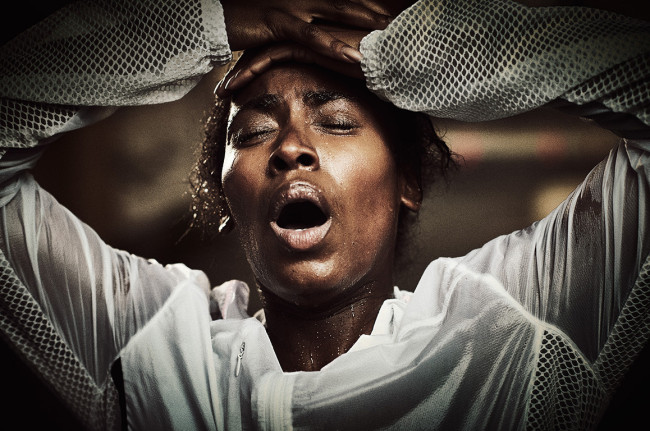

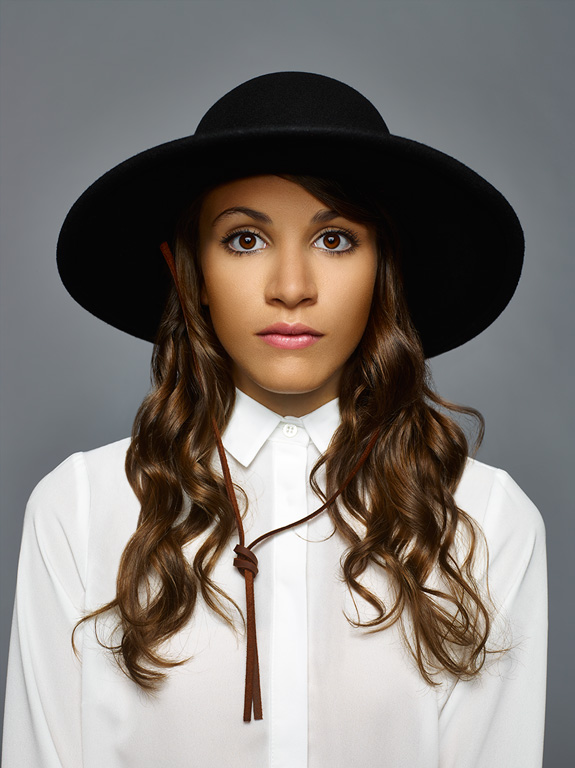
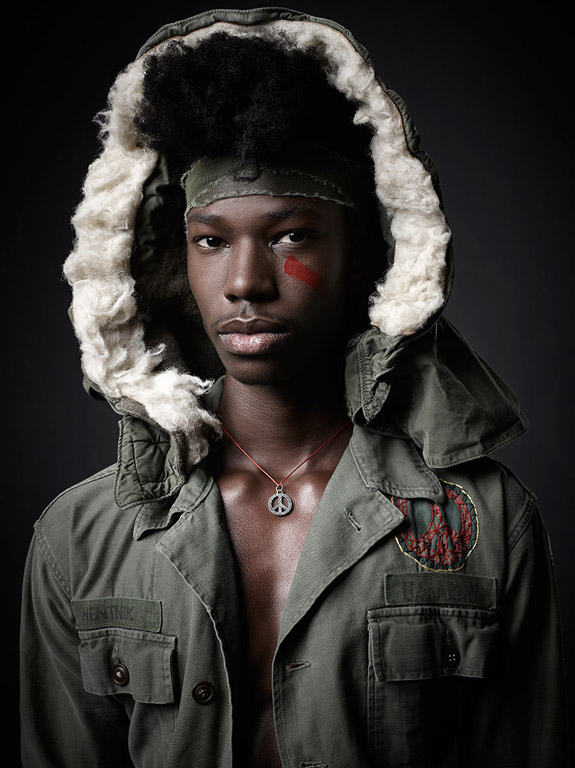


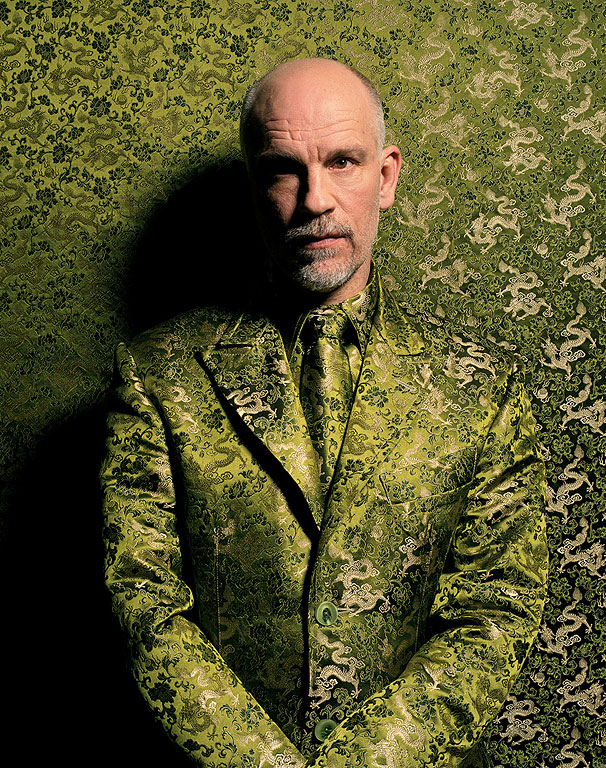

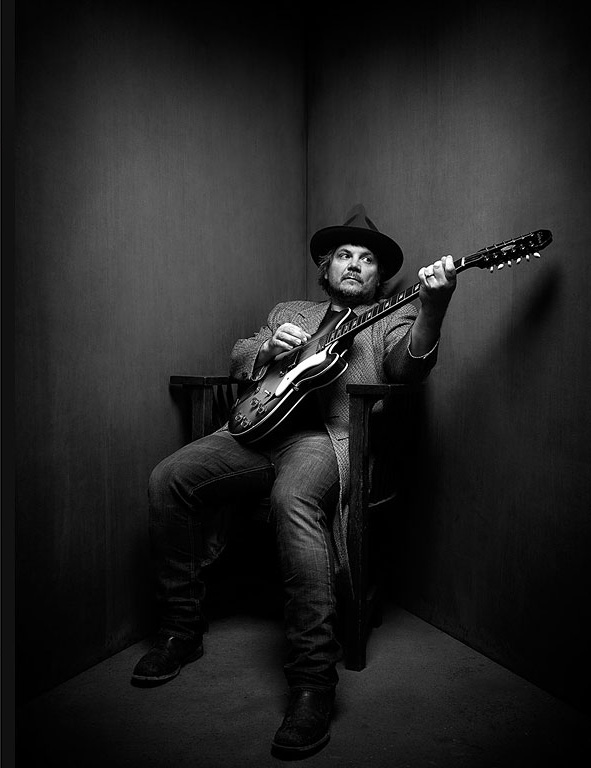


2 Comments
Beautiful interview Jonathan, heartfelt and inspiring. A very interesting insight in Sandro’s work/career. Thanks!
Thank you, Carlo. Appreciate the kind words.
Comments are closed for this article!